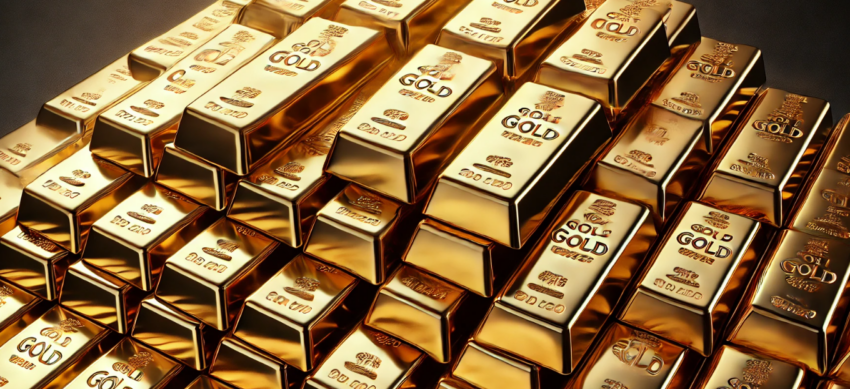| Listen to our audio presentation: Stock Market Timing |
Gold continues to prove itself as a safe haven, reaching record highs as the market anticipates the Federal Reserve’s upcoming decision on interest rate cuts. With concerns about an impending recession, gold’s role as an “all-weather hedge” has been reaffirmed, making it a crucial asset for global portfolios, especially when uncertainty surrounds the financial landscape.
- Gold has hit record highs 34 times this year, fueled by expectations of Federal Reserve interest rate cuts and growing recession fears.
- December gold futures recently settled at $2,610.70 per ounce, with forecasts predicting prices could reach $2,700 by early 2025.
- Central banks, particularly in emerging markets, are increasing gold purchases, contributing to global demand and rising prices.
- Investors see gold as a safe-haven hedge against potential U.S. financial sanctions, a tight presidential election, and growing concerns over national debt.
- Other precious metals, like palladium and silver, are also gaining traction, with palladium surging 17% last week and silver rising 3.2%.
According to MarketWatch, gold has achieved record settlements 34 times this year alone, with rising interest rate cut expectations driving this latest rally. Brien Lundin, editor of Gold Newsletter, stated that global portfolios are increasing their gold allocations, expecting the metal to perform well regardless of how aggressively the Fed decides to cut rates. This anticipation of monetary easing has positioned gold as a stable hedge against a potential economic downturn.
On Thursday, gold prices soared even as stock markets faltered, demonstrating the precious metal’s ability to perform during periods of broader financial instability. As CNBC noted, December gold futures added $30.10, settling at $2,610.70 per ounce after touching an intraday record of $2,614.60. By Friday, spot gold traded at $2,582.05 per ounce, further cementing its momentum amid market turbulence.
The central drivers of this gold rally are the prospects of rate cuts by both the Federal Reserve and the European Central Bank. The CME FedWatch Tool shows that markets are fully pricing in a 25-basis-point U.S. rate cut next week, with a 43% chance of a more aggressive 50-basis-point cut. This would mark the first rate reduction by the Fed since 2020, spurring gold’s bullish momentum.
Adding to this optimism, Goldman Sachs forecasts that gold prices will continue to climb, potentially reaching $2,700 by early 2025. The combination of interest rate cuts and continued gold purchases by central banks, particularly in emerging markets, provides solid backing for this upward trend. Additionally, the looming U.S. presidential election and potential financial sanctions could offer further support for gold, as geopolitical risks often boost the demand for safe-haven assets.
Furthermore, physically backed gold exchange-traded funds (ETFs) have seen inflows for four consecutive months, reaching their highest levels since January. The World Gold Council also reported a global surge in gold ETF holdings, underscoring the growing appetite for the metal in times of economic uncertainty. This increase in global demand supports the view that gold will remain a key part of diversified portfolios in the face of rising recession fears.
From a technical perspective, the gold market is nearing “overbought” territory, with the Relative Strength Index (RSI) at 69. Although this suggests a potential slowdown, the broader market sentiment remains overwhelmingly bullish. Other precious metals like palladium and silver have also experienced gains, with palladium surging 17% last week and spot silver rising 3.2%.
As the stars continue to align for the gold market, many investors are now eyeing the next major milestone: $3,000 per ounce. While the exact timeline remains uncertain, gold’s future looks bright, driven by central bank policies, geopolitical concerns, and a general shift towards safer investments.

